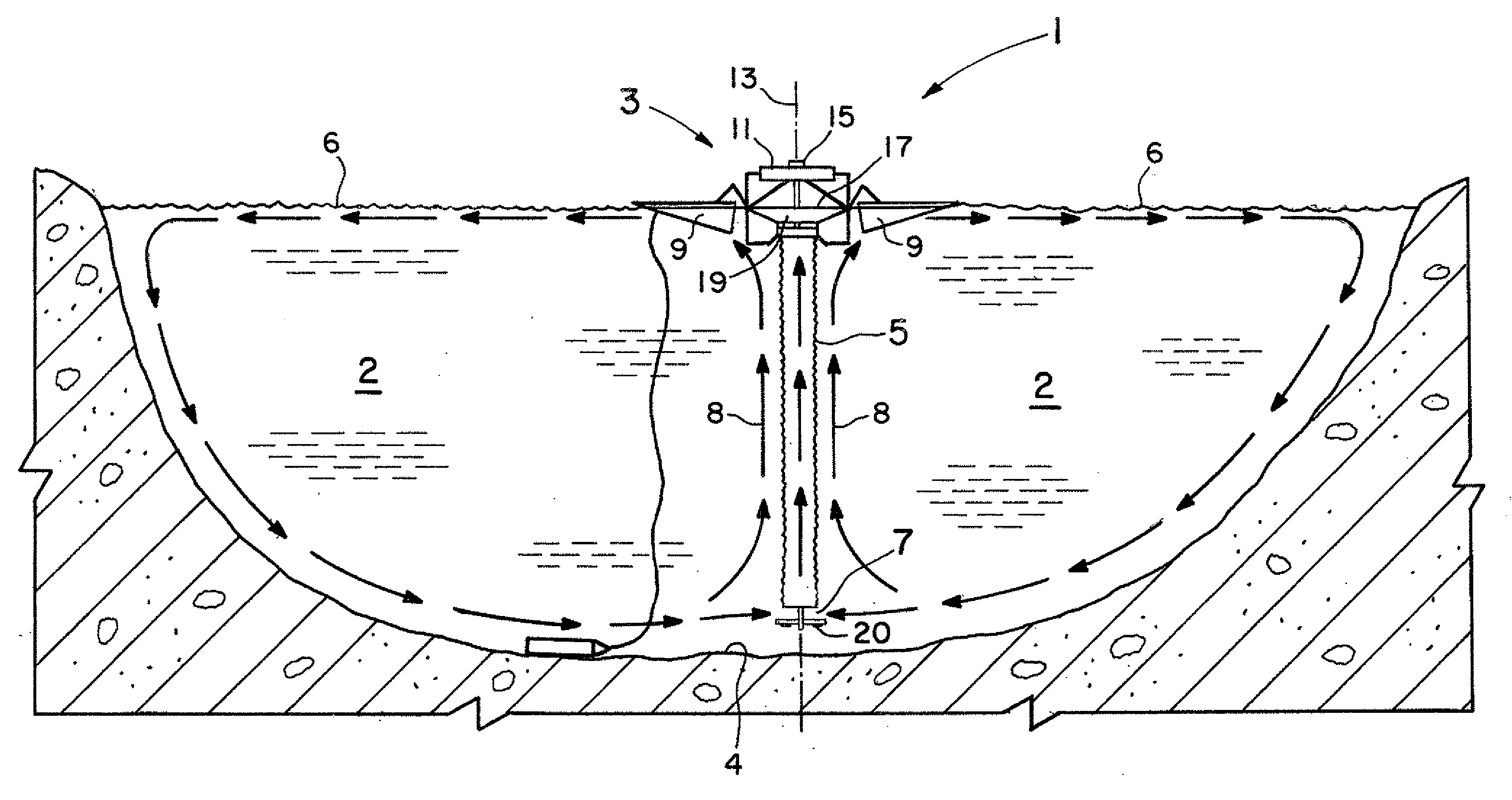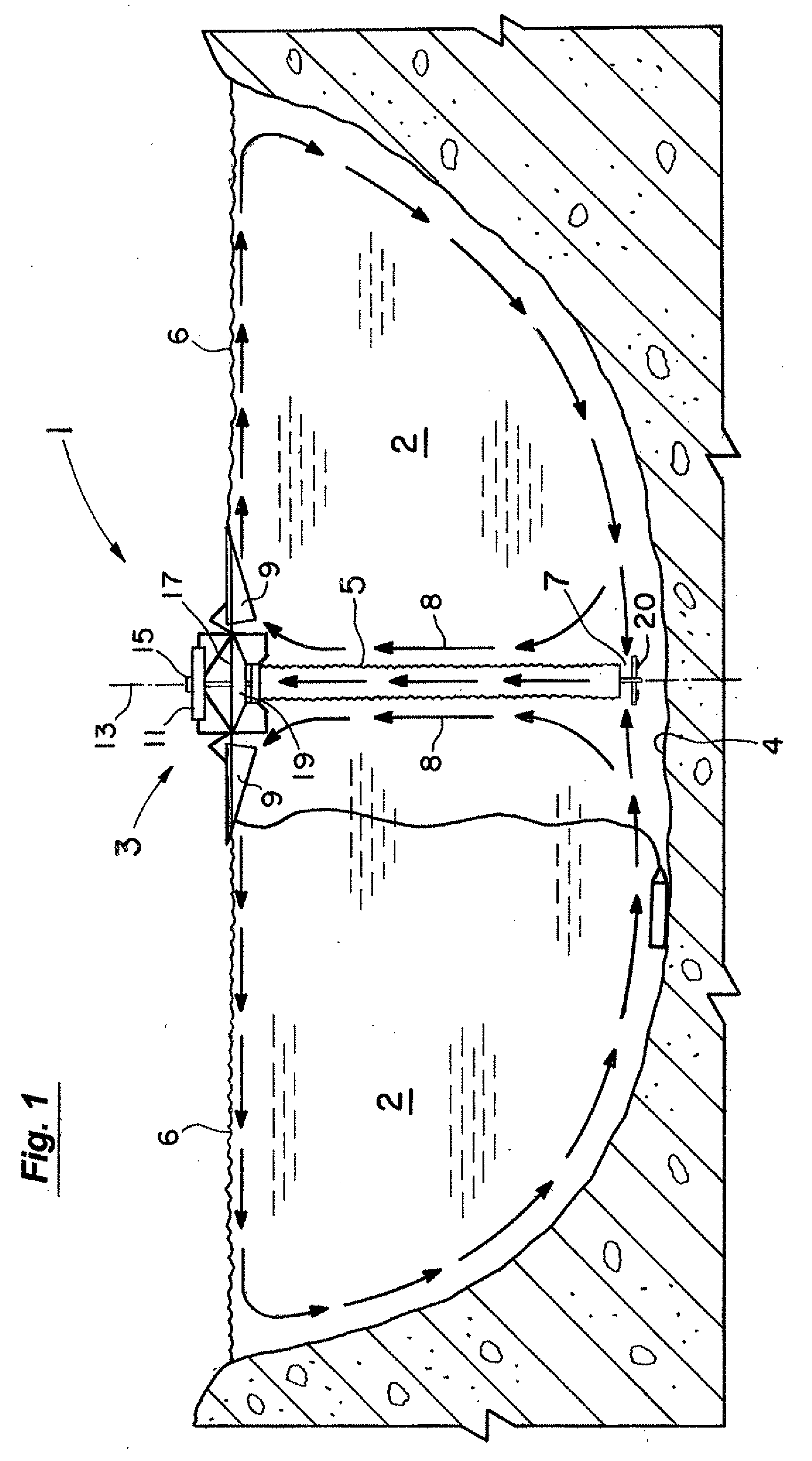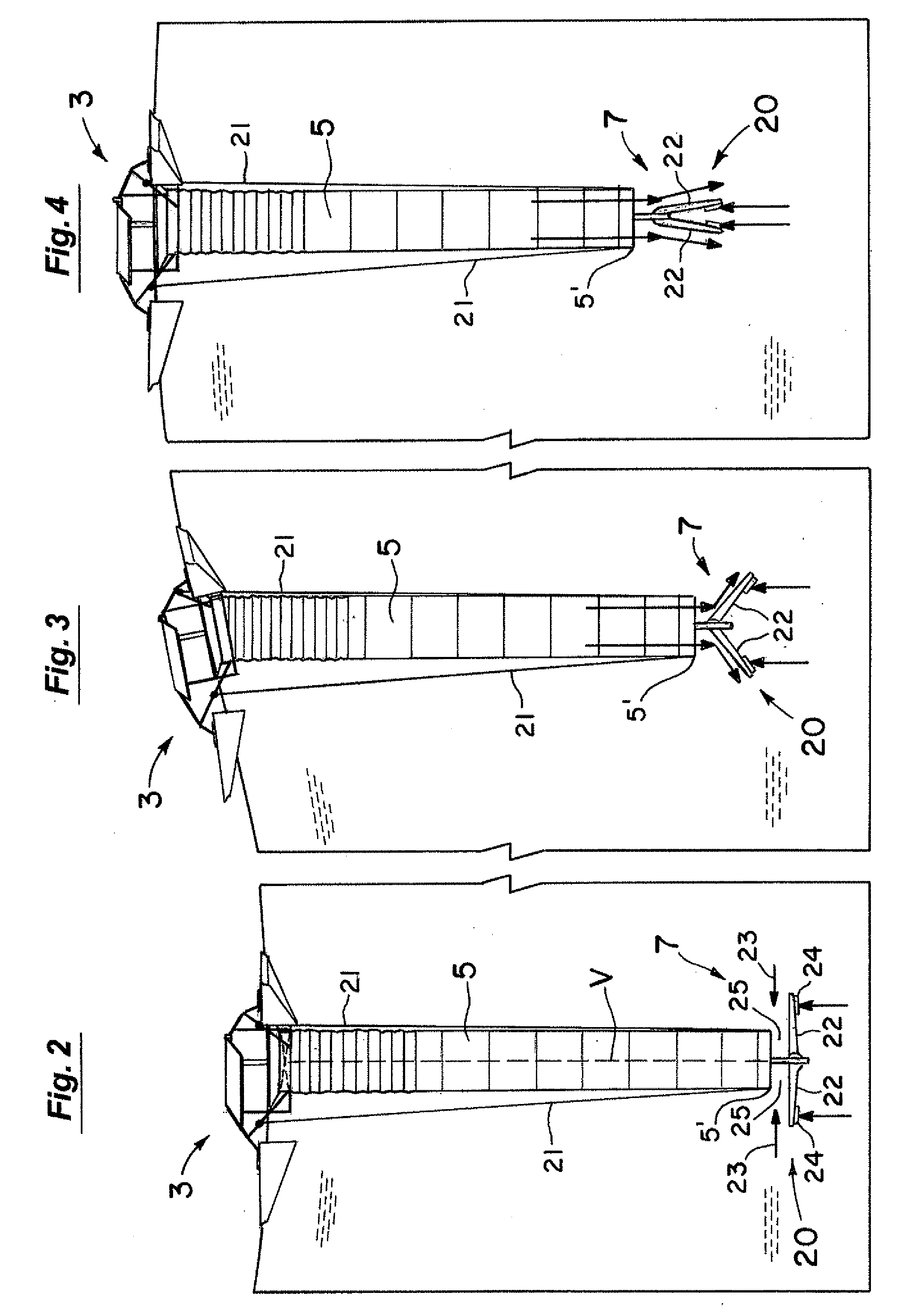Water circulation systems for ponds, lakes, municipal tanks, and other bodies of water
a technology for municipal tanks and water bodies, applied in water cleaning, sustainable biological treatment, biological water/sewage treatment, etc., can solve the problems of large volume of water in the hose not being able to quickly escape out of the restricted bottom or inlet of the hose, and affecting the efficiency of the system. , to achieve the effect of effectively bringing chlorine, preventing or at least inhibiting their return, and relatively quick manner
- Summary
- Abstract
- Description
- Claims
- Application Information
AI Technical Summary
Benefits of technology
Problems solved by technology
Method used
Image
Examples
Embodiment Construction
[0034] As schematically shown in FIGS. 1, the water circulation system 1 of the present invention for large bodies of water such as a pond or lake 2 includes an upper flotation platform or floating portion 3 with a draft hose or tube 5 depending downwardly from the platform 3 toward the lake bottom 4 to the water inlet 7 to the hose 5. The flotation platform 3 includes a plurality of floats 9 (e.g., three) supported thereon. The floats 9 extend outwardly of the central axis 13 (FIG. 1) of the platform 3 and are preferably evenly spaced thereabout. The floats 9 extend far enough out from the central axis 13 to provide a relatively stable and buoyant support structure for the system 1 including its solar panels 11, electric motor 15, dish 17, and impeller at 19 as well as for the depending draft hose 5 and the structure of the water inlet 7. One or more cables or lines 21 as in FIGS. 2-4 can also be provided to extend from the flotation platform 3 down to the bottom portion 5′ of the ...
PUM
| Property | Measurement | Unit |
|---|---|---|
| Length | aaaaa | aaaaa |
| Angle | aaaaa | aaaaa |
| Length | aaaaa | aaaaa |
Abstract
Description
Claims
Application Information
 Login to View More
Login to View More - R&D
- Intellectual Property
- Life Sciences
- Materials
- Tech Scout
- Unparalleled Data Quality
- Higher Quality Content
- 60% Fewer Hallucinations
Browse by: Latest US Patents, China's latest patents, Technical Efficacy Thesaurus, Application Domain, Technology Topic, Popular Technical Reports.
© 2025 PatSnap. All rights reserved.Legal|Privacy policy|Modern Slavery Act Transparency Statement|Sitemap|About US| Contact US: help@patsnap.com



